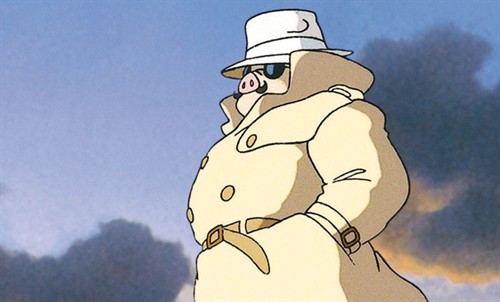你如何实现最快的高斯模糊算法?
我打算用 Java 实现它,所以排除了GPU解决方案。我的应用程序PlanetGenesis是跨平台的,所以我不想要JNI。
 IT小君
2021-10-20T23:29:03
IT小君
2021-10-20T23:29:03 你如何实现最快的高斯模糊算法?
我打算用 Java 实现它,所以排除了GPU解决方案。我的应用程序PlanetGenesis是跨平台的,所以我不想要JNI。
 IT小君
IT小君 数学运动员可能知道这一点,但对于其他任何人..
由于高斯的良好数学特性,您可以通过首先在图像的每一行上运行一维高斯模糊,然后在每列上运行一维模糊来快速模糊二维图像。
 IT小君
IT小君 终极解决方案
我对这么多信息和实现感到非常困惑,我不知道我应该相信哪一个。想通之后,我决定写一篇自己的文章。我希望它可以为您节省数小时的时间。
它包含源代码,(我希望)它简短、干净且易于重写为任何其他语言。请投票给它,以便其他人可以看到它。
 IT小君
IT小君 我找到了Quasimondo:孵化器:处理:快速高斯模糊。此方法包含许多近似值,例如使用整数和查找表而不是浮点数和浮点数除法。我不知道现代 Java 代码有多少加速。
Fast Shadows on Rectangles有一个使用B-splines的近似算法。
C# 中的快速高斯模糊算法声称有一些很酷的优化。
此外,David Everly 的Fast Gaussian Blur (PDF) 有一种快速的高斯模糊处理方法。
我会尝试各种方法,对它们进行基准测试并在此处发布结果。
出于我的目的,我从互联网上复制并实现了基本(独立处理 XY 轴)方法和 David Everly 的快速高斯模糊方法。它们的参数不同,所以我无法直接比较它们。然而,对于大的模糊半径,后者经历的迭代次数要少得多。此外,后者是一种近似算法。
 IT小君
IT小君 您可能想要框模糊,这要快得多。请参阅此链接以获取出色的教程和一些复制和粘贴 C 代码。
 IT小君
IT小君 对于更大的模糊半径,尝试应用三次框模糊。这将非常接近高斯模糊,并且比真正的高斯模糊快得多。
 IT小君
IT小君 我已经将 Ivan Kuckir 的快速高斯模糊实现转换为 java.lang. 结果过程是 O(n),正如他在自己的博客中所述。如果您想了解更多关于为什么 3 time box blur 近似于 Gaussian blur(3%) 我的朋友,您可以查看box blur和Gaussian blur。
这是java实现。
@Override
public BufferedImage ProcessImage(BufferedImage image) {
int width = image.getWidth();
int height = image.getHeight();
int[] pixels = image.getRGB(0, 0, width, height, null, 0, width);
int[] changedPixels = new int[pixels.length];
FastGaussianBlur(pixels, changedPixels, width, height, 12);
BufferedImage newImage = new BufferedImage(width, height, image.getType());
newImage.setRGB(0, 0, width, height, changedPixels, 0, width);
return newImage;
}
private void FastGaussianBlur(int[] source, int[] output, int width, int height, int radius) {
ArrayList<Integer> gaussianBoxes = CreateGausianBoxes(radius, 3);
BoxBlur(source, output, width, height, (gaussianBoxes.get(0) - 1) / 2);
BoxBlur(output, source, width, height, (gaussianBoxes.get(1) - 1) / 2);
BoxBlur(source, output, width, height, (gaussianBoxes.get(2) - 1) / 2);
}
private ArrayList<Integer> CreateGausianBoxes(double sigma, int n) {
double idealFilterWidth = Math.sqrt((12 * sigma * sigma / n) + 1);
int filterWidth = (int) Math.floor(idealFilterWidth);
if (filterWidth % 2 == 0) {
filterWidth--;
}
int filterWidthU = filterWidth + 2;
double mIdeal = (12 * sigma * sigma - n * filterWidth * filterWidth - 4 * n * filterWidth - 3 * n) / (-4 * filterWidth - 4);
double m = Math.round(mIdeal);
ArrayList<Integer> result = new ArrayList<>();
for (int i = 0; i < n; i++) {
result.add(i < m ? filterWidth : filterWidthU);
}
return result;
}
private void BoxBlur(int[] source, int[] output, int width, int height, int radius) {
System.arraycopy(source, 0, output, 0, source.length);
BoxBlurHorizantal(output, source, width, height, radius);
BoxBlurVertical(source, output, width, height, radius);
}
private void BoxBlurHorizontal(int[] sourcePixels, int[] outputPixels, int width, int height, int radius) {
int resultingColorPixel;
float iarr = 1f / (radius + radius);
for (int i = 0; i < height; i++) {
int outputIndex = i * width;
int li = outputIndex;
int sourceIndex = outputIndex + radius;
int fv = Byte.toUnsignedInt((byte) sourcePixels[outputIndex]);
int lv = Byte.toUnsignedInt((byte) sourcePixels[outputIndex + width - 1]);
float val = (radius) * fv;
for (int j = 0; j < radius; j++) {
val += Byte.toUnsignedInt((byte) (sourcePixels[outputIndex + j]));
}
for (int j = 0; j < radius; j++) {
val += Byte.toUnsignedInt((byte) sourcePixels[sourceIndex++]) - fv;
resultingColorPixel = Byte.toUnsignedInt(((Integer) Math.round(val * iarr)).byteValue());
outputPixels[outputIndex++] = (0xFF << 24) | (resultingColorPixel << 16) | (resultingColorPixel << 8) | (resultingColorPixel);
}
for (int j = (radius + 1); j < (width - radius); j++) {
val += Byte.toUnsignedInt((byte) sourcePixels[sourceIndex++]) - Byte.toUnsignedInt((byte) sourcePixels[li++]);
resultingColorPixel = Byte.toUnsignedInt(((Integer) Math.round(val * iarr)).byteValue());
outputPixels[outputIndex++] = (0xFF << 24) | (resultingColorPixel << 16) | (resultingColorPixel << 8) | (resultingColorPixel);
}
for (int j = (width - radius); j < width; j++) {
val += lv - Byte.toUnsignedInt((byte) sourcePixels[li++]);
resultingColorPixel = Byte.toUnsignedInt(((Integer) Math.round(val * iarr)).byteValue());
outputPixels[outputIndex++] = (0xFF << 24) | (resultingColorPixel << 16) | (resultingColorPixel << 8) | (resultingColorPixel);
}
}
}
private void BoxBlurVertical(int[] sourcePixels, int[] outputPixels, int width, int height, int radius) {
int resultingColorPixel;
float iarr = 1f / (radius + radius + 1);
for (int i = 0; i < width; i++) {
int outputIndex = i;
int li = outputIndex;
int sourceIndex = outputIndex + radius * width;
int fv = Byte.toUnsignedInt((byte) sourcePixels[outputIndex]);
int lv = Byte.toUnsignedInt((byte) sourcePixels[outputIndex + width * (height - 1)]);
float val = (radius + 1) * fv;
for (int j = 0; j < radius; j++) {
val += Byte.toUnsignedInt((byte) sourcePixels[outputIndex + j * width]);
}
for (int j = 0; j <= radius; j++) {
val += Byte.toUnsignedInt((byte) sourcePixels[sourceIndex]) - fv;
resultingColorPixel = Byte.toUnsignedInt(((Integer) Math.round(val * iarr)).byteValue());
outputPixels[outputIndex] = (0xFF << 24) | (resultingColorPixel << 16) | (resultingColorPixel << 8) | (resultingColorPixel);
sourceIndex += width;
outputIndex += width;
}
for (int j = radius + 1; j < (height - radius); j++) {
val += Byte.toUnsignedInt((byte) sourcePixels[sourceIndex]) - Byte.toUnsignedInt((byte) sourcePixels[li]);
resultingColorPixel = Byte.toUnsignedInt(((Integer) Math.round(val * iarr)).byteValue());
outputPixels[outputIndex] = (0xFF << 24) | (resultingColorPixel << 16) | (resultingColorPixel << 8) | (resultingColorPixel);
li += width;
sourceIndex += width;
outputIndex += width;
}
for (int j = (height - radius); j < height; j++) {
val += lv - Byte.toUnsignedInt((byte) sourcePixels[li]);
resultingColorPixel = Byte.toUnsignedInt(((Integer) Math.round(val * iarr)).byteValue());
outputPixels[outputIndex] = (0xFF << 24) | (resultingColorPixel << 16) | (resultingColorPixel << 8) | (resultingColorPixel);
li += width;
outputIndex += width;
}
}
}
 IT小君
IT小君 我会考虑为此使用 CUDA 或其他一些 GPU 编程工具包,特别是如果您想使用更大的内核。如果做不到这一点,总会在装配中手动调整您的循环。
 IT小君
IT小君 最好在小块上完成,因为全图像转置很慢,而使用PUNPCK链(PUNPCKHBW、PUNPCKHDQ、PUNPCKHWD、PUNPCKLBW、PUNPCKLDQ、PUNPCKLWD)可以非常快地完成小块转置。
 IT小君
IT小君 在一维中:
重复使用几乎任何内核进行模糊都会倾向于高斯内核。这就是高斯分布的酷炫之处,也是统计学家喜欢它的原因。所以选择容易模糊的东西并应用它几次。
例如,使用盒形内核很容易模糊。首先计算一个累积和:
y(i) = y(i-1) + x(i)
然后:
blurred(i) = y(i+radius) - y(i-radius)
重复几次。
或者,您可能会使用各种IIR滤波器来回切换几次,它们的速度同样快。
在 2D 或更高版本中:
正如DarenW所说,在每个维度中一个接一个地模糊。
 IT小君
IT小君 我在研究中一直在努力解决这个问题,并尝试了快速高斯模糊的有趣方法。首先,如前所述,最好将模糊分离为两个一维模糊,但是根据实际计算像素值的硬件,您实际上可以预先计算所有可能的值并将它们存储在查找表中。
换句话说,预先计算Gaussian coefficient* 的每个组合input pixel value。当然,您需要离散化系数,但我只是想添加此解决方案。如果您订阅了IEEE,则可以阅读使用查找表进行实时特征提取的快速图像模糊中的更多信息。
最终,我最终还是使用了CUDA :)
 IT小君
IT小君 有几种快速的二维数据高斯模糊方法。你应该知道什么。
您的选择取决于所需的速度、精度和实现复杂性。
 IT小君
IT小君 尝试像我在这里所做的那样使用 Box Blur: Approximating Gaussian Blur Using Extended Box Blur
这是最好的近似。
使用积分图像,您可以使其更快。
如果你这样做,请分享你的解决方案。
 IT小君
IT小君 用现在已经实现的新库(截至 2016 年)回答这个老问题,因为使用 Java 的 GPU 技术有许多新的进步。
正如其他几个答案中所建议的那样,CUDA 是一种替代方法。但是java现在有CUDA支持。
IBM CUDA4J 库:提供用于管理和访问 GPU 设备、库、内核和内存的 Java API。使用这些新的 API,可以编写 Java 程序来管理 GPU 设备特性,并利用 Java 内存模型、异常和自动资源管理的便利将工作卸载到 GPU。
Jcuda:NVIDIA CUDA 和相关库的 Java 绑定。使用 JCuda,可以从 Java 程序与 CUDA 运行时和驱动程序 API 进行交互。
Aparapi:允许 Java 开发人员通过在 GPU 上执行数据并行代码片段来利用 GPU 和 APU 设备的计算能力,而不是局限于本地 CPU。
一些Java OpenCL 绑定库
https://github.com/ochafik/JavaCL:OpenCL 的Java 绑定:一个面向对象的 OpenCL 库,基于自动生成的低级绑定
http://jogamp.org/jocl/www/:OpenCL 的Java 绑定:一个面向对象的 OpenCL 库,基于自动生成的低级绑定
http://www.lwjgl.org/:OpenCL 的Java 绑定:自动生成的低级绑定和面向对象的便利类
http://jocl.org/:OpenCL 的Java 绑定:原始 OpenCL API 1:1 映射的低级绑定
以上所有这些库将有助于在 CPU 上以比 Java 中的任何实现更快的速度实现高斯模糊。
 IT小君
IT小君 我在不同的地方看到了几个答案,我把它们收集在这里,这样我就可以试着把我的心思放在它们周围并记住它们以备后用:
无论您使用哪种方法,请使用1D 过滤器分别过滤水平和垂直维度,而不是使用单个方形过滤器。
在回顾了所有这些之后,我想起简单而糟糕的近似值通常在实践中效果很好。在另一个领域,Alex Krizhevsky 发现 ReLU 比他开创性的 AlexNet 中的经典 sigmoid 函数更快,尽管它们乍一看似乎是 Sigmoid 的可怕近似。
 IT小君
IT小君 CWP 的 Dave Hale 有一个 minejtk 包,其中包括递归高斯滤波器(Deriche 方法和 Van Vliet 方法)。java子程序可以在https://github.com/dhale/jtk/blob/0350c23f91256181d415ea7369dbd62855ac4460/core/src/main/java/edu/mines/jtk/dsp/RecursiveGaussianFilter.java找到
Deriche 的方法对于高斯模糊(以及高斯导数)来说似乎是一个非常好的方法。
您应该使用高斯核是可分离的这一事实,即您可以将 2D 卷积表示为两个 1D 卷积的组合。
如果滤波器很大,那么使用空间域中的卷积等效于频(傅立叶)域中的乘法这一事实也可能是有意义的。这意味着您可以对图像和滤波器进行傅里叶变换,将(复数)结果相乘,然后进行傅里叶逆变换。FFT(快速傅立叶变换)的复杂度为 O(n log n),而卷积的复杂度为 O(n^2)。此外,如果您需要使用相同的过滤器模糊许多图像,您只需要对过滤器进行一次 FFT。
如果您决定使用 FFT,FFTW 库是一个不错的选择。